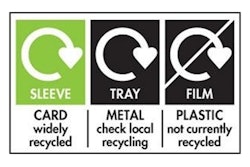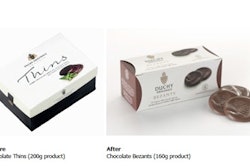In order to reduce the risk of infection and cross-contamination, much consideration goes into packaging development, logistics and testing to ensure that wound dressings are sterile from manufacture to the point of use.
But what if the point of use is the point of manufacture?
Similar to the concept of a spider producing silk and building a web at the place of need, researchers have developed a portable method for manufacturing nanofibers that could one day be used to directly deposit sterile bandages onto a wound.
The Disease Biophysics Group at Harvard’s Wyss Institute for Biologically Inspired Engineering recently announced the development of a hand-held device that can quickly produce nanofibers with precise control over fiber orientation. The ability to regulate fiber alignment and deposition “is crucial when building nanofiber scaffolds that mimic highly aligned tissue in the body or designing point-of-use garments that fit a specific shape,” according to Leah Burrows, Science and Technology Communications Officer at the Harvard John A. Paulson School of Engineering and Applied Sciences (SEAS). In short, fiber alignment has a major impact on the mechanical properties of the material.
Existing methods
Rotary Jet-Spinning (RJS) and Immersion Rotary Jet-Spinning (iRJS) are manufacturing techniques that were developed in the Disease Biophysics Group and the SEAS at Harvard. Burrows explains that both “dissolve polymers and proteins in a liquid solution and use centrifugal force or precipitation to elongate and solidify polymer jets into nanoscale fibers.”
Though these techniques can produce materials ranging from DNA to nylon and Kevlar, neither has the benefit of being portable, which could be very beneficial for wound care in the field.
“Our main goal for this research was to make a portable machine that you could use to achieve controllable deposition of nanofibers,” said Nina Sinatra, a Graduate Student in the Disease Biophysics Group and co-first author of the paper. “In order to develop this kind of point-and-shoot device, we needed a technique that could produce highly aligned fibers with a reasonably high throughput.”
Pull spinning
Research on the new fabrication method, called pull spinning, was recently published in Macromolecular Materials and Engineering. In this method, a high-speed rotating bristle dips into a polymer or protein reservoir and pulls a droplet from solution into a jet. The fiber travels in a spiral trajectory on the bristle and solidifies before detaching from the bristle and moving toward a collector.
The Institute notes that other processes involve multiple manufacturing variables, while pull spinning requires only one processing parameter to regulate the nanofiber’s diameter: solution viscosity.
Pull spinning is versatile, working with a variety of polymers and proteins. The researchers demonstrated the technique in two different applications: (1) directing muscle tissue growth and function on bioscaffolds using polycaprolactone and gelatin fibers, (2) creating point-of-wear apparel by shooting nanotextiles directly onto the knee joint of a doll which held up during joint movement.
With minimal processing variables and the ability to work with a variety of materials, the researchers offer practical and flexible method that could one day transfer from the lab to the real world.
“This simple, proof-of-concept study demonstrates the utility of this system for point-of-use manufacturing,” says Kit Parker, Core Faculty member at the Wyss Institute and the Tarr Family Professor of Bioengineering and Applied Physics and Director of the Disease Biophysics Group. “Future applications for directed production of customizable nanotextiles could extend to spray-on sportswear that gradually heats or cools an athlete’s body, sterile bandages deposited directly onto a wound, and fabrics with locally varying mechanical properties.”

























